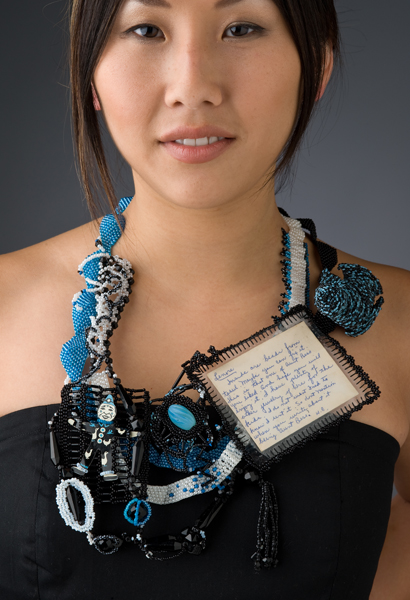FOUND OBJECTS
and TEXT
Email
Home
Commissions
Figures
Tapestries
Found Objects and Text
Adornment
Biography
copyright Teresa Sullivan 2007-2017
Particle Flow
detail first followed by
each of the two sides
13" x 11
This tapestry uses found text laminated and sewn together with beads. It is reversible; with different images on front and back. The mixed images combined with the different colors and styles of beads qualify this piece as a kind of crazy quilt.
Right angle weave was used in a freeform style. Unlike her peyote stitched figures, which are tightly sewn and self-supporting, this piece has a fabric-like drape to it.
The ideas for "Particle Flow" grew from its initial concept. At first text and images were chosen for color but on closer observation, content began to play a role. The notion of particles and their movement emerged as a coherent theme --the tiny particles that make up skin, lotion and peanut butter, for example. Larger particles such as people traveling and the movement of materials along conveyor belts are other examples. Sullivan keeps collecting images for this piece that has the possibility of growing.
Pictured in catalogue of
Bead International 2002
Dairy Barn, Athens, Ohio.
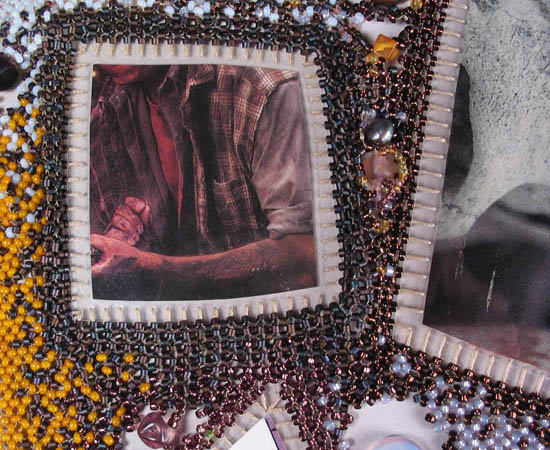

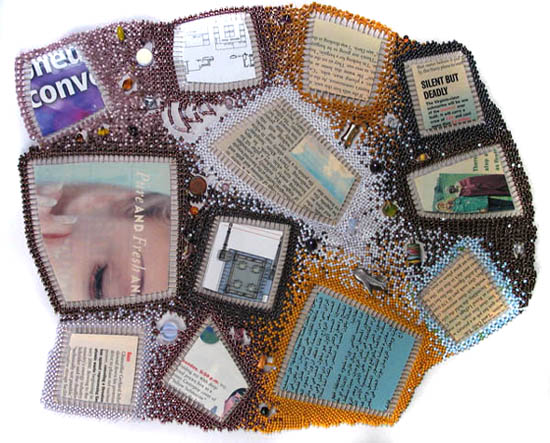
Dead Man's Curves
10" x 8"
This piece is based on the tales of wanton women who get the grizzliest of cowboys and prospectors into trouble. Laminated paper and found objects are stitched to a backdrop made of glass beads stitched in a hexagonal netted pattern. No glue or wire, just beads stitched together with thread keep the plastic toys, dime-novel cutout, snake vertebrae and playing cards arranged on its surface. It hangs from beaded tabs on the back.
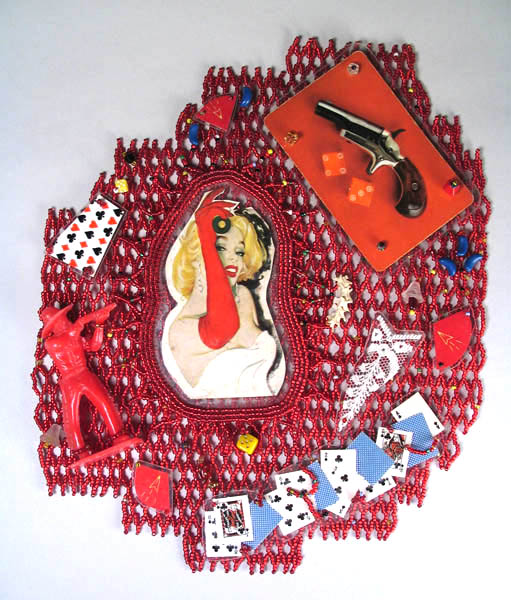
Border Town Girl #1
5.5" x 4"
Border Town Girl #2
5.5" x 4"
These are wall hanging pieces made from laminated paper cutouts from an old novel called "Border Town Girl", with glass, rolled paper, and dyed seed pod beads, sewn together with thread. The seed pod beads were brought from Hawaii by Sullivan's grandmother in 1972 as part of a necklace. The stitch is a type used by the Ndbele people from Zimbabwe, also known as herringbone weave. Note the way the different colors of the beads blend into each other. It has beaded loops on reverse for wall mounting.
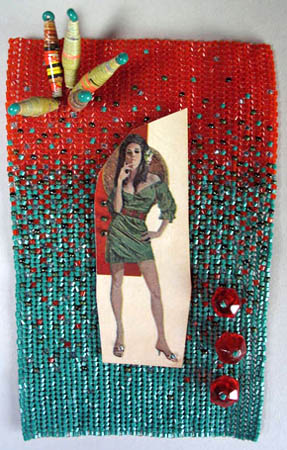

...

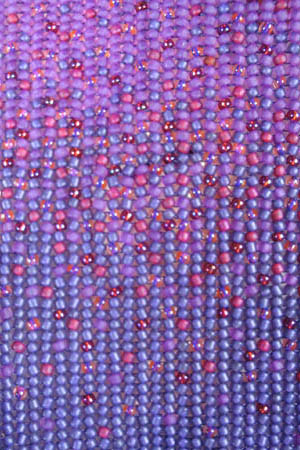
Don't Tell Fred
11"h x 9"w x 2"
This piece incorporates a 1920s-era knotted “jet” glass bead necklace, which came with the note card, which reads:
“Lenore
Inside are beads from tassel. Maybe you can fix it. This is that one of Aunt Bess you liked. And hope you will enjoy it. I have plenty of other jewelry of hers for the kids. I do not want Fred to know I sent it. So don’t mention it when you write about it being Aunt Bess?
H.B.”
Why couldn’t Fred know? Was Aunt Bess a roaring ‘20s “it” girl? Did the kids end up with the rest of her jewelry? Did the secret ever get out? The clown-like figure evokes questions too. It signifies a sort of “holy fool” archetype, with the birds, symbols of air, perhaps carrying the truth with them. Will a little bird tell Fred? The opalescence of the glass trade bead in the center could be the crystal ball that reveals all in the end. Sullivan used all but a few of the beads stored in the envelope, leaving a few inside. "I love these little artifacts that reveal details about people who may be long gone; it makes them real to me, more than the immaculate matching sets of china they leave behind. How many of us can relate to having a little secret they keep from someone they love"?
